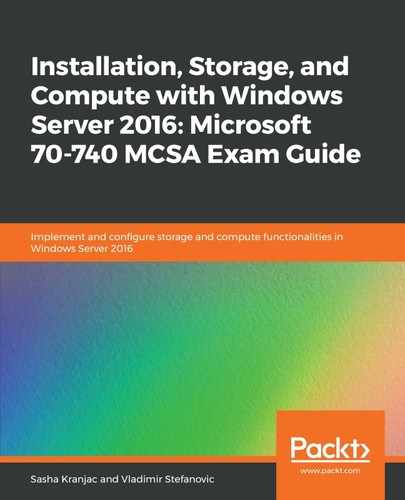Hyper-V is a role in Windows Server 2016 that allows you to run multiple guest operating systems within a host operating system. The guest and host operating systems share hardware resources but act independently. This is possible using virtualization, a technology that enables the abstraction of hardware resources – including the processor, the memory, and the network – and provides isolation for the guest operating systems.
A Windows Server 2016 that runs Hyper-V is called a host, while a guest operating system is called a virtual machine or a guest. Each virtual machine runs in an isolated environment and a Hyper-V host can run multiple virtual machines simultaneously. There are many benefits of virtualization, including the following:
- Provisioning virtual machines is much faster than provisioning physical machines. This leads to a more efficient and agile environment.
- A virtualized environment provides increased business continuity.
- Increased server density allows significant monetary savings as multiple virtualized workloads can run on a single server.
The Virtual Machine Manager (VMM) or the Hypervisor is the software layer that sits on top of the hardware. Its task is to provide isolated environments, also called partitions, where each environment has its own isolated, virtualized hardware resources, including memory, processor, network, and storage subsystems. Hypervisor controls one or more of the guest operating systems that sit on top of a hypervisor.
The following diagram shows the schematic overview of a VMM Type 1 Hypervisor:

Three major types of hypervisors exist today: VMM Type 2, VMM Hybrid, and VMM Type 1. Hyper-V runs a VMM Type 1 hypervisor, which provides the best performance, security, and control compared to other types of hypervisors.
On a system without a hypervisor, an operating system sits directly on top of the hardware. After you install a Hyper-V role, the operating system changes fundamentally: the hypervisor replaces an operating system and sits on top of the hardware, and then a parent or root partition is created. The parent partition hosts the virtualization stack and owns the resources that are not owned by the hypervisor, such as the memory and some of the devices. Multiple partitions are possible, and every other partition created is called a child partition, in which guest operating systems or virtual machines are installed.
